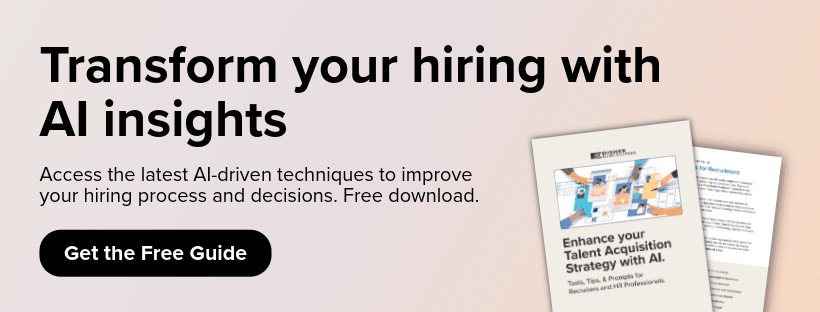Speed vs. Fit: The Hiring Tradeoff That’s Costing Companies More Than They Think
June 19, 2025

It’s likely you’ve felt (or are currently feeling) the stress of needing to fill a role fast but fearing you might choose the wrong person. I’ve been there, too—wrestling with deadlines, increasing cost of vacancy, and anxious leadership expecting quick hires.
But prioritizing speed over fit might hurt your company more than you realize. This blog explains why and offers practical steps to help you strike the right balance.
How Long Should It Realistically Take to Fill a Role?
Hiring the right person takes time. Based on our own experience and data from industry organizations like SHRM, average time-to-fill metrics are between 40-45 days for non-technical roles and 60-90 days for technical roles.
These factors can extend timelines even further:
- Economic shifts, such as recessions or rapid growth phases, dramatically impact hiring timelines. During a downturn, companies often receive overwhelming numbers of applications, requiring more careful review. In boom times, there’s more competition for limited talent, prolonging search.
- In highly competitive industries like technology and engineering, the talent pool can be narrow, making it difficult to find qualified candidates.
- Technical or senior-level positions naturally take longer due to specialized requirements and the careful evaluation of specific expertise. Each candidate must be thoroughly vetted for both skill set and cultural fit.
- Internal process issues like misalignment, overloaded recruiters, unclear job descriptions, uncompetitive salaries, lacking interview skills, or poor employer branding can lead to a poor candidate experience.
6 Hidden Costs of a Bad Hire
There are rare times when you can find, vet, and hire the right person in just a few weeks, but most of the time it doesn’t go like that. And when you rush the process by prioritizing speed over fit—just trying to fill a role to fill a role—you can run into problems.
The U.S. Department of Labor estimates a bad hire can cost up to 30% of the employee’s first-year earnings, and that’s conservative. Here’s why.
1. Salary and Benefits Paid to the Wrong Person
Even if the hire doesn’t last, you’ve already spent thousands in salary, benefits, and onboarding support. That money doesn’t come back, and it doesn’t account for the time your team spent getting them up to speed.
Taking extra time upfront can help you find candidates who align with the skills you need and your company’s mission and culture.
2. Lost Time and Productivity Across the Team
A bad hire doesn’t just underperform. They often slow down others, cause rework, or require constant support from teammates and managers who could be focusing on their own work.
3. Increased Turnover and Team Morale Issues
It only takes one weak link in the chain to cause frustration across a team. When you hire someone who doesn’t pull their weight or fit culturally, you risk losing high performers who are tired of carrying the load.
Sometimes a little extra time spent can result in reduced turnover, fewer disruptions and replacement costs, and stronger team bonds. Because you’re not just hiring employees; you’re building a team!
4. Rehiring and Re-onboarding Costs
Every time you restart the hiring process, you’re losing more time and money. That includes job ads, recruiter fees, interviews, background checks, and training, all repeated for the same role.
5. Missed Opportunities and Slowed Business Growth
While you’re backfilling the same role again, projects get delayed, goals are missed, and new opportunities are shelved.
6. Reputation Risks—Internally and Externally
Hiring the wrong people repeatedly sends the wrong message. Internally, teams lose trust in leadership. Externally, candidates and clients may start to question your company culture.
How to Know If Your Hiring Process Is Hurting Your Company
Check your turnover rates. High turnover indicates a deeper problem. Then, conduct exit interviews, seek employee feedback, and honestly assess your hiring process.
A quick checklist could be:
- Are you frequently rehiring for the same position?
- Do new employees struggle to integrate?
- Are teams consistently stressed and overburdened?
How to Balance Speed and Fit Effectively
Top-performing companies optimize their hiring processes by clearly defining roles, maintaining structured interviews, and consistently involving key team members. They invest in technology to expedite candidate evaluations without cutting corners.
No matter what your current hiring process looks like, you can get back on the right track. Here are three ways to get started.
1. Analyze Your Current Hiring Outcomes
First, review your recent hires. What situations were successful? Which ones weren’t? Why? This may require feedback from multiple team members, or even customers.
2. Include Leadership and Managers in Hiring Discussions
By including leaders in hiring process conversations, you can better align expectations and clarify priorities. Some leaders (especially those outside of HR functions) simply don’t know what’s realistic and not realistic in terms of timeline. This gives you the space to explain tradeoffs.
3. Implement Automation and AI to Streamline Processes
There are many forms of technology, automation, and AI that can help move the hiring process along faster. While technology should never fully replace the human element in recruiting, it can speed up tedious tasks so that you can spend more time doing more meaningful work.
For instance, you could use AI to create templates for common communications, take notes during interviews, or even analyze compensation data.

Start Making Smarter Hires
Balancing speed and fit is essential for long-term growth. Rushed hiring processes create short-term fixes but long-term pain. Investing in the right hire every time will transform teams, improve morale, and ultimately enhance your company’s bottom line.
If you need help making better hires faster, don’t hesitate to reach out.




